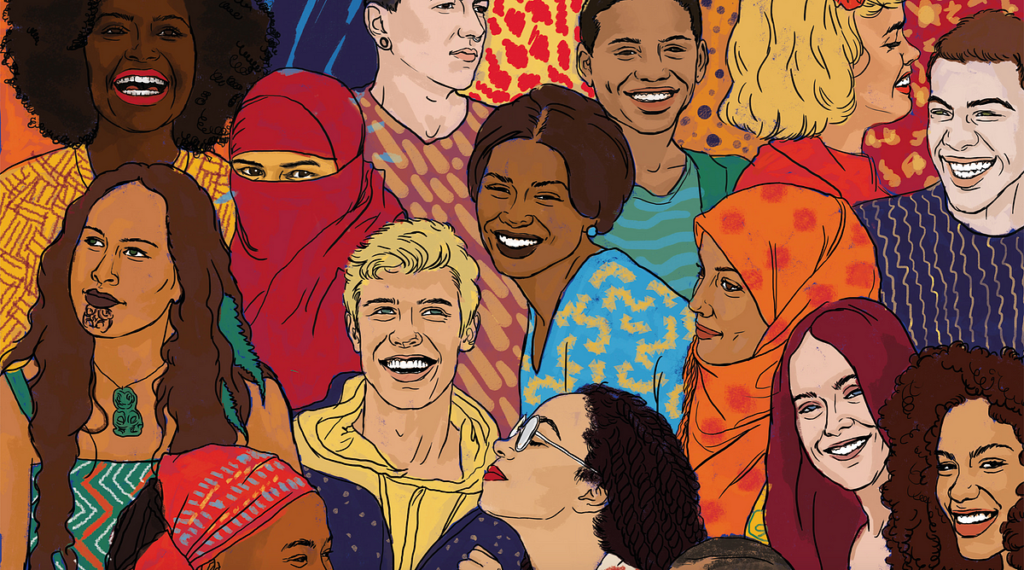In our increasingly interconnected world, businesses are faced with the challenge of designing for multicultural audiences. With diverse populations and global markets, understanding and embracing cultural differences is crucial for effective communication and engagement. Design plays a significant role in this process, as it visually communicates messages, evokes emotions, and shapes perceptions. Designing for a multicultural audience requires a thoughtful approach that considers cultural nuances, preferences, and sensitivities. This article explores valuable tips and best practices for designing for a multicultural audience, helping businesses create inclusive, culturally sensitive, and engaging designs.
I. Research and Understand Your Target Cultures
a. Cultural Research: Conduct in-depth research on the cultures you are targeting to gain a deep understanding of their values, customs, traditions, and social norms. This research will help you design with cultural sensitivity and avoid potential misinterpretations or offenses.

b. Demographic Insights: Gain insights into the demographic composition of your target audience within each culture. Understand factors such as age groups, ethnicities, languages, and regional preferences to tailor your designs accordingly and ensure they resonate with the specific target groups.
II. Visual Elements and Design Considerations
a. Colors and Symbolism: Different cultures associate different meanings with colors and symbols. Research the cultural significance of colors and symbols in your target cultures to ensure that your design choices align with their preferences and convey the intended message.

b. Typography and Language: Adapt typography choices to suit the languages and writing systems of your target cultures. Pay attention to font styles, readability, and cultural conventions around text placement and hierarchy. Consider using localized fonts or scripts to enhance the authenticity and legibility of your designs.
c. Imagery and Representation: Use diverse and inclusive imagery that reflects the multicultural nature of your audience. Avoid stereotypes and ensure that your visuals represent a range of ethnicities, cultures, and backgrounds. Consider incorporating culturally relevant images and symbols that resonate with each target culture.
III. Language and Localization
a. Language Considerations: If you are designing for audiences with different primary languages, ensure that your designs can accommodate multilingual content. Consider the layout, typography, and legibility of translated text to maintain consistency and clarity across different languages.
b. Localization: Go beyond mere translation and adapt your designs to suit the cultural norms and preferences of each target audience. This may involve adjusting visuals, copy, and design elements to ensure they resonate with the local culture and avoid cultural misunderstandings.
IV. User Experience and Accessibility
a. User-Centric Design: Prioritize user experience by designing intuitive interfaces and navigation that cater to the diverse needs and expectations of your multicultural audience. Consider cultural differences in user behavior, interaction patterns, and user interface preferences when designing for each culture.

b. Accessibility: Ensure that your designs are inclusive and accessible to people with disabilities. Follow accessibility guidelines and standards to make your designs usable by individuals with visual impairments, hearing impairments, or other disabilities. Provide alternative text for images, use proper color contrast, and make interactive elements easily navigable for a seamless user experience.
By thoroughly researching and understanding your target cultures, considering visual elements and design considerations specific to each culture, adapting language and localization, and prioritizing user experience and accessibility, you can create designs that resonate with and engage your multicultural audience effectively.
In conclusion, designing for a multicultural audience requires a thoughtful and inclusive approach. By conducting cultural research, understanding visual elements and design considerations, adapting to language and localization requirements, and prioritizing user experience and accessibility, you can create designs that effectively engage and resonate with diverse cultures. Embracing the richness of multiculturalism in your designs will enable you to reach a broader audience, foster inclusivity, and drive meaningful connections with your target markets.
Key Takeaways:
- Research and understand the cultural nuances of your target audience.
- Adapt visual elements, colors, and symbols to align with cultural preferences.
- Consider typography, language, and localization to cater to different languages and cultural norms.
- Prioritize user experience and accessibility for a diverse audience.
Contact us today to discuss how we can help you design for a multicultural audience and create impactful designs that connect with diverse cultures and communities.

Leave a Reply